These 7 Tips Lay Out How You Can Have Better Trail Etiquette
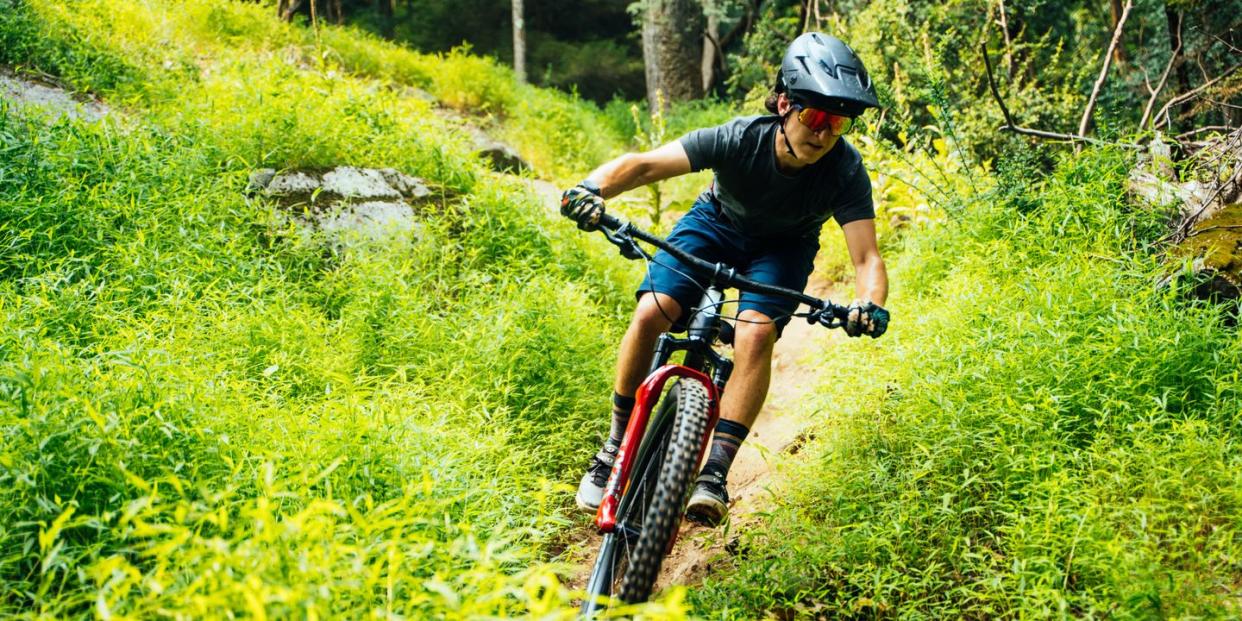
"Hearst Magazines and Yahoo may earn commission or revenue on some items through the links below."
I love riding my mountain bike, whether it’s spending an hour or all day out in nature. When the COVID-19 pandemic hit the United States in March of 2020, I thanked my lucky stars that one of my favorite activities was something I could continue doing. It also made me appreciate how important trails are to my mental well-being, causing me to dedicate more time as a trail volunteer.
As trail systems across the country experience a surge in users—be they hikers, birders, equestrians, runners, or new riders—it’s important for people to be mindful of one another for everyone’s safety, especially at times when hospitals are stretched thin. Just like we cyclists advocate for sharing the road, we have to recognize our position as generally the fastest users when we share the trails.
Here are a few guidelines to follow that show your respect for the trails and the other people out enjoying them. You can also check out the nonprofit American Trails campaign called Trails Are Common Ground, or visit the International Mountain Bicycling Association’s Rules of the Trail guide for further reading.
#1 Leave no trace
Part of what makes mountain biking special is enjoying the beauty of natural surroundings. Keep nature beautiful by being prepared to carry any waste with you. While there may be trash cans at the trailhead, you probably won’t find them along the trails. If you stop for a snack break, make sure any wrappers are securely stashed away before you ride.
For more on this topic, check out REI’s Seven Principles of Leave No Trace.
#2 Yield appropriately and communicate
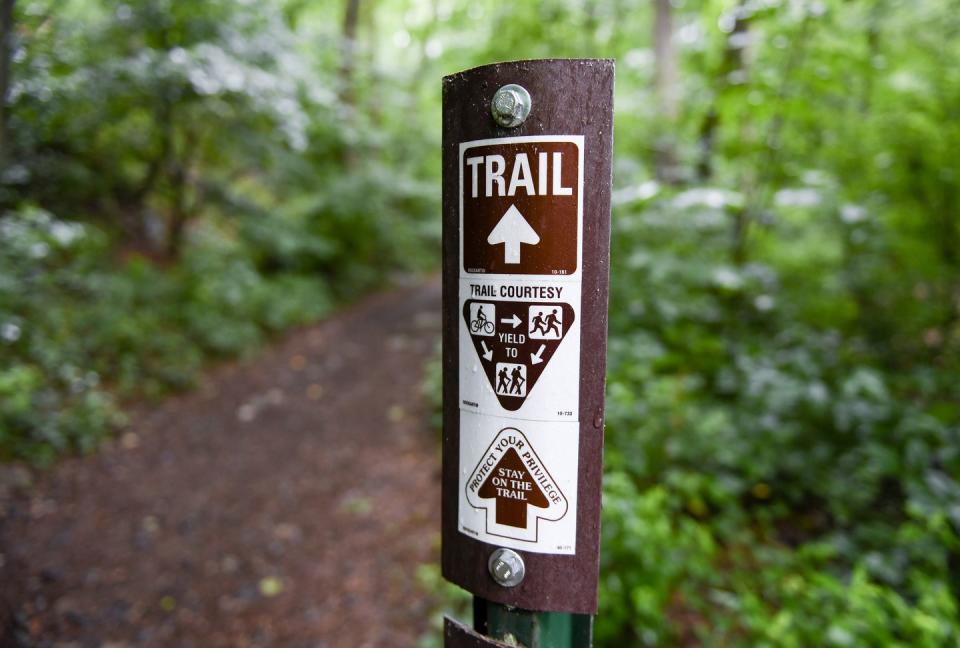
While some trails may be bike-only, most of the trails we ride are multiuse. Mountain bikers yield to horses and foot traffic, and descending riders yield to climbing riders (more on this on #5.) Always be courteous, and remember how far a friendly greeting can go—good experiences with mountain bikers can help our reputation as much as the few bad ones hurt it.
Kindly alert other users as you approach—especially if you’re approaching from behind—by saying there’s a rider behind or with a polite ding of your bell. Yielding can be as simple as just moving to the side of the trail, or slowing down if there is enough room for all users to safely pass one another. Be especially mindful of horses, as they may get spooked by the sound of a bicycle.
#3 Think before you sink
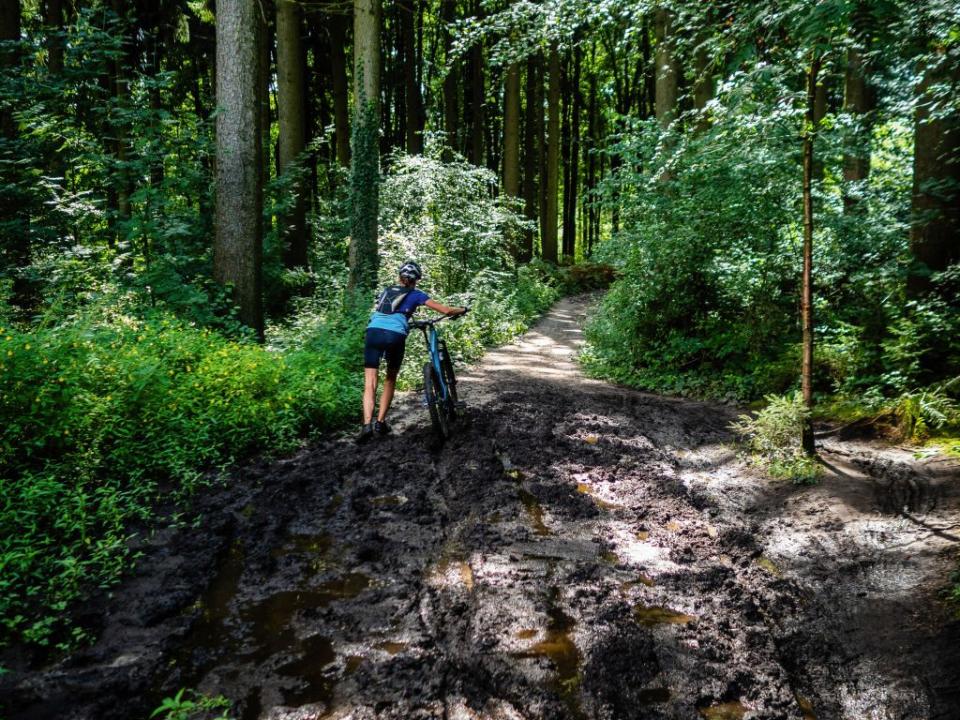
Leaving no trace also applies to your tire treads. If the trails are wet enough that your tire is leaving a visible rut, it’s time to turn around. Trail conditions may vary considerably based on the soil content and its ability to withstand precipitation, meaning that it might take you a bit to learn how long after rain the trails will be good to go.
If the trails are mostly dry, but you encounter a wet spot, ride through the center rather than widening the trail by riding around it. If you ride in a place where the ground freezes in the winter, you’ll also need to be prepared for the freeze/thaw cycle, where moisture coming up from the ground makes the trails muddy in the spring. Frozen dirt is fast, so bundle up for early rides where you won’t sink into the trails!
#4 Keep your ears and eyes open
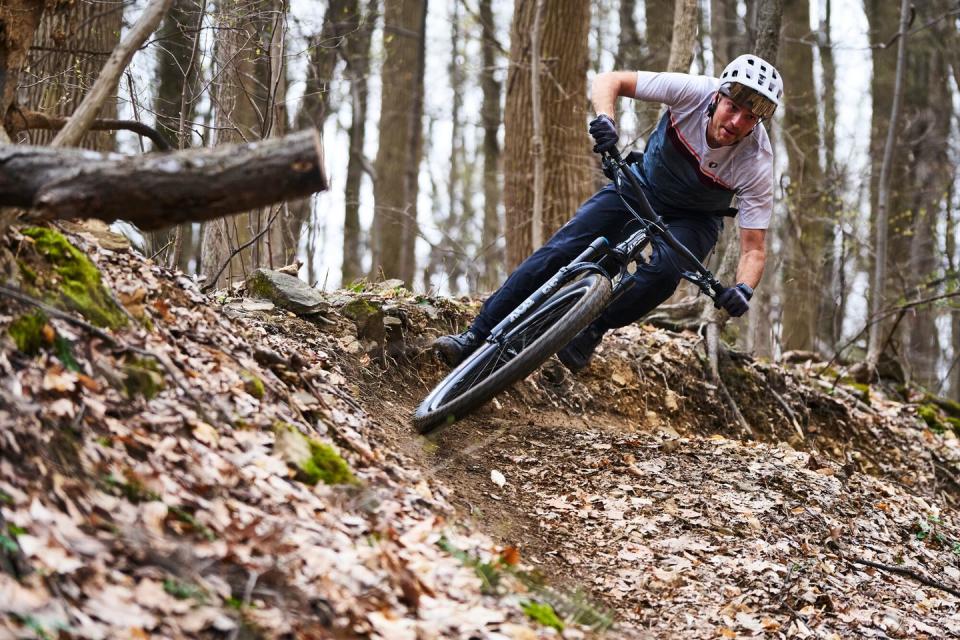
Situational awareness is important when you’re on the trail. While some places may have directional trails (meaning traffic should only be traveling in one direction), this is far from universal. And even on a directional trail, you never know whether another rider—or a deer—might be around the corner. Ripping around corners at speed is exhilarating, but unless you’re in a race on a closed course, keep yourself in check. Listen for other trail users, and consider putting a bell on your bars for situations where it is hard to see. Some riders may also opt for a passive bell, similar to the bear bells favored by backpackers. And unless you can hear what’s going on around you, it’s probably best to leave the headphones at home when you’re out on the trail.
#5 Uphill has right-of-way
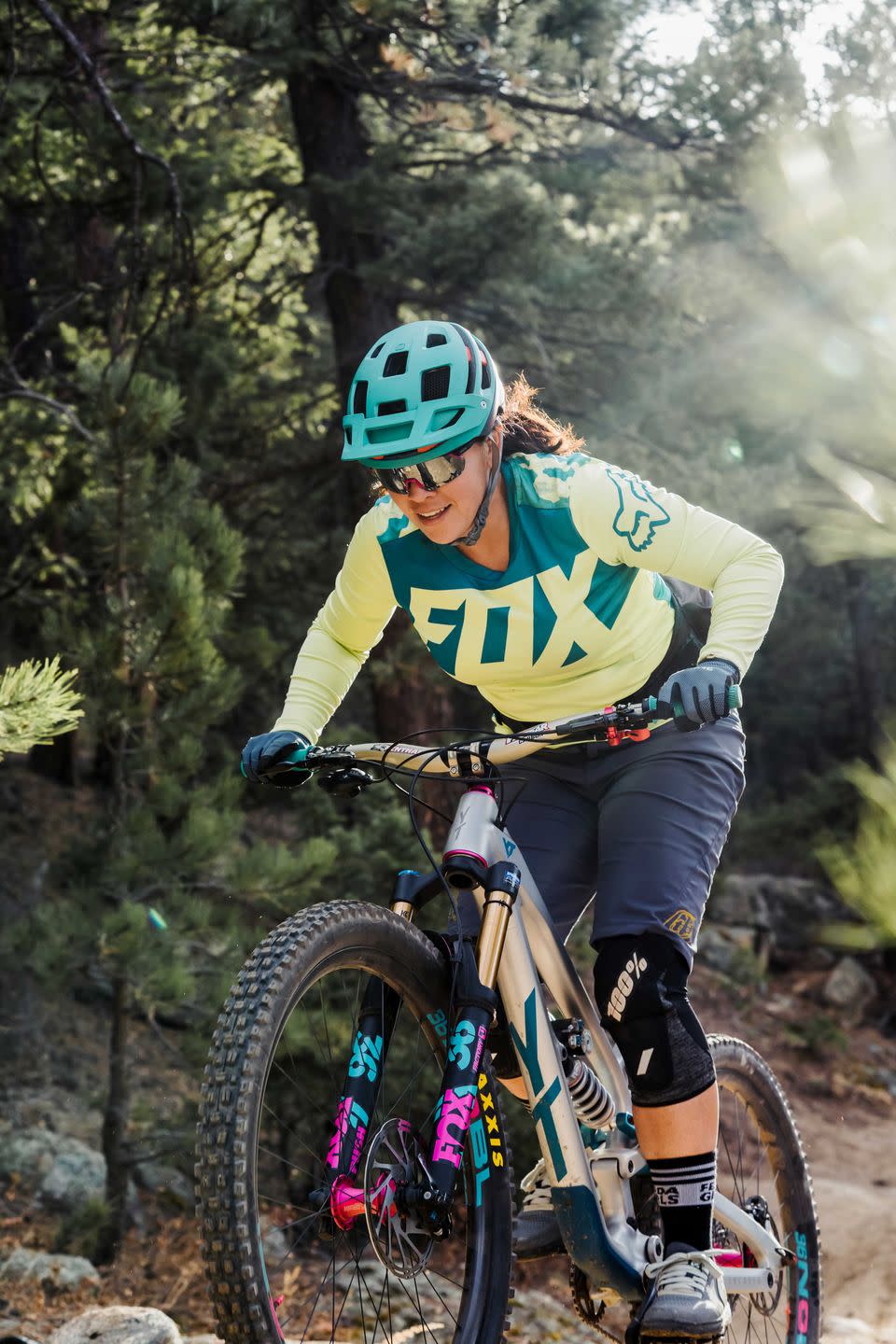
Keeping your speed in check is especially important when it comes to descents on two-way trails, because they are climbs in the other direction. In general, climbing riders have the right-of-way, so if you are descending, look and listen for oncoming riders and be prepared to find a safe place to yield the best climbing lines to them.
On trails that are more level, right-of-way may not be as obvious, but if you know the oncoming rider has an obstacle coming up that would benefit from momentum, or if it is easy for you to move over and yield, do so. And if a rider yields for you, thank them. If you are riding with a group, it is also nice to let the oncoming rider(s) know how many of you there are.
#6 Don’t modify the trail
So you rode a really cool feature on this trail out of town, and think it would be fun to replicate it on your local trail. Before you start pulling out the power tools and stacking up the logs or rocks, think again. Local trail builders invest hours of time and sweat equity—not to mention negotiations with municipalities or natural resources districts—ensuring we have access to great trails. That comes with conditions on what can be built and how. Not only that, but many trail builders and volunteers have undergone training in sustainable trail building, ecology, and more. Think that sounds like something you’d like to do? See #7.
#7 Dig to ride
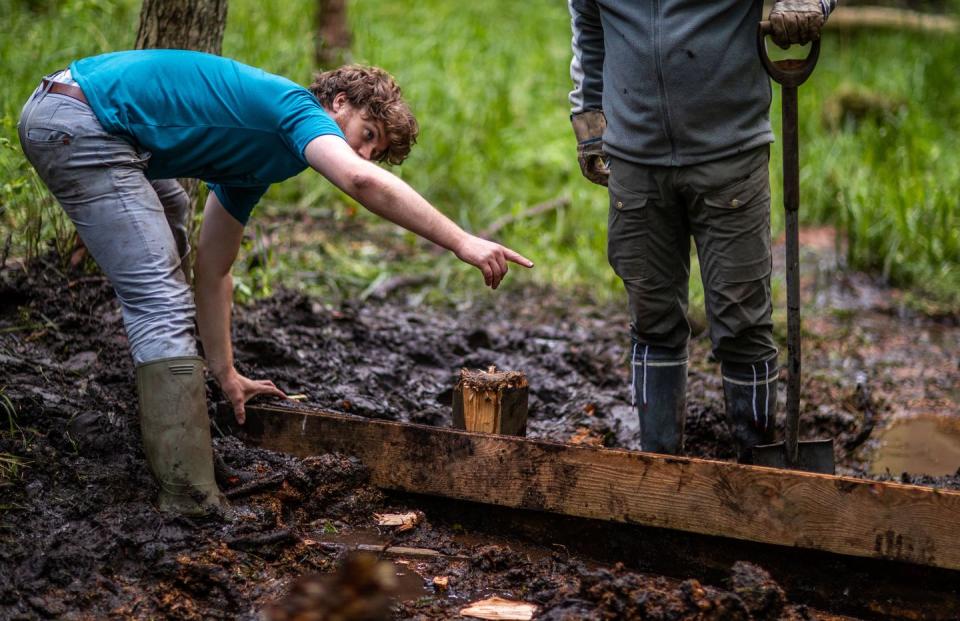
Some places have the funding for paid trail crews, but chances are your local trails are built and maintained by a dedicated team of volunteers who love mountain biking. If you enjoy getting out there on your bike, why not show up for a volunteer day?
Seek out information on social media, a bulletin board at the trailhead, or by asking folks you see out on the trails if there are volunteer opportunities coming up. You might help pick up trash, clear debris after a storm, remove invasive plants, or build in drainage to help trails dry faster. It’s also a great way to meet new riding buddies. Plus, there is the undeniable satisfaction of riding a trail you helped build, trim, or clear: it’s a gift that keeps on giving every time you return.
Find your trail advocacy organization.
You Might Also Like

